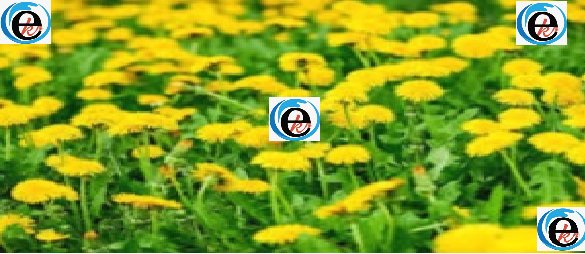Easy Way to Prepare Dandelion Wine at Home

Easy Way to Prepare Dandelion Wine at Home
Dandelion wine has a mythical status in that almost everyone has heard of it, but very few people have ever tasted it.
It’s not difficult to make, but it does require time to pick enough flowers for the recipe, and patience waiting for the wine to mature.
Although the recipe includes sugar, it gets fermented out, resulting in a dry wine with a colour like sunshine.
What do you need? You need;
- Dandelion flowers
- Non-chlorinated water
- Zest and lemon juice but not the seeds or bitter white inner peel)
- Zest and orange juice again, not the seeds or bitter white inner peel)
- Sugar
- Golden raisins, chopped
- Yeast nutrient Or Cornmeal
- Wine yeast Or Baking yeast
Process Involved are;
#01
- Use scissors to snip off most of the calyces (green parts) from the base of the dandelion stems.
- Compost or discard those green parts and the stems.
- Don’t worry if a few specks of green make their way into the recipe along with the yellow flowers, but remember that too much of the green parts will result in bitter wine.
- Put the trimmed flowers into a nonreactive crock, pot, or other vessels (no aluminium, copper, or non-enamelled iron).
#02
- In a separate pot, bring the water to a boil. Pour it over the flowers and then let the flowers infuse in the hot water for 2 hours.
- Strain through a jelly bag or a colander lined with several layers of cheesecloth or one layer of butter muslin.
- Squeeze to extract as much of the juice as possible. The spent dandelion flowers are great for your compost.
- Reserve the strained liquid.
#03
- Bring the dandelion flower infusion to a boil in a large pot over high heat.
- Stir in the citrus zest and juices, and the sugar.
- Stir to help the sugar dissolve.
#04
- Stir in the chopped raisins.
- Remove the pot from the heat and let the contents cool to room temperature.
#05
- Stir in the yeast nutrient or cornmeal along with the wine or baking yeast.
- Cover the mixture and leave it at room temperature for 10 to 14 days.
- During that time, stir it at least three times a day (remember not to stir it too often).
#06
- Sterilize a glass gallon jug by filling it with a solution of 1 tablespoon bleach in a gallon of water, or with an oxygen-based sterilizer such as One-Step available from home winemaking suppliers.
- Drain and rinse the jug.
- Strain the dandelion concoction through a strainer and a funnel into the jug.
- Seal the jug with either a fermentation lock or a balloon with a single pinprick in it.
- Both the fermentation lock and the pricked balloon allow gases to escape while preventing harmful bacteria and mold from getting in.
#07
- After 1 month, siphon or carefully pour off the liquid into another sanitized jug, leaving behind the yeasty sediment at the bottom of the first jug.
- If there are more than 2 inches of air space between the top of the wine and the rim of the new jug, top it off with a simple syrup made of equal parts water and sugar
- Top as before with a fermentation lock or pricked balloon water and sugar.
- Top as before with a fermentation lock or pricked balloon.
#08
- Repeat this siphoning off again every 3 months, leaving the sediments behind each time, until the wine is clear rather than cloudy and there is no longer any yeasty sediment forming on the bottom of the jug.
#09
- Funnel the wine into sterilized wine bottles.
- Cork the bottles.
- Get a hand corker from a winemaking supply company.
- They are not expensive and do a much better job of securely corking the bottles than you can do without one.
- Store the bottles on their sides in a cool, dark place for at least one year before drinking.





